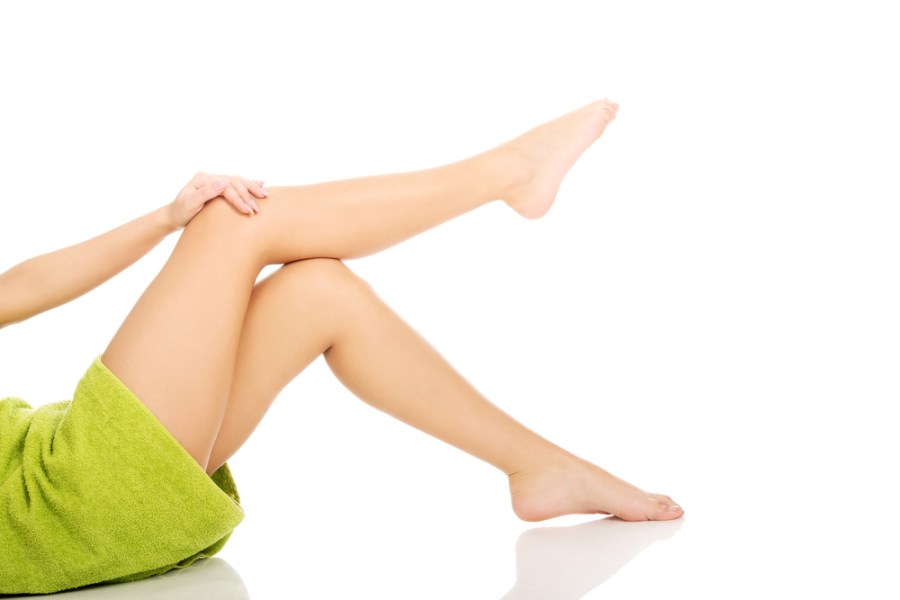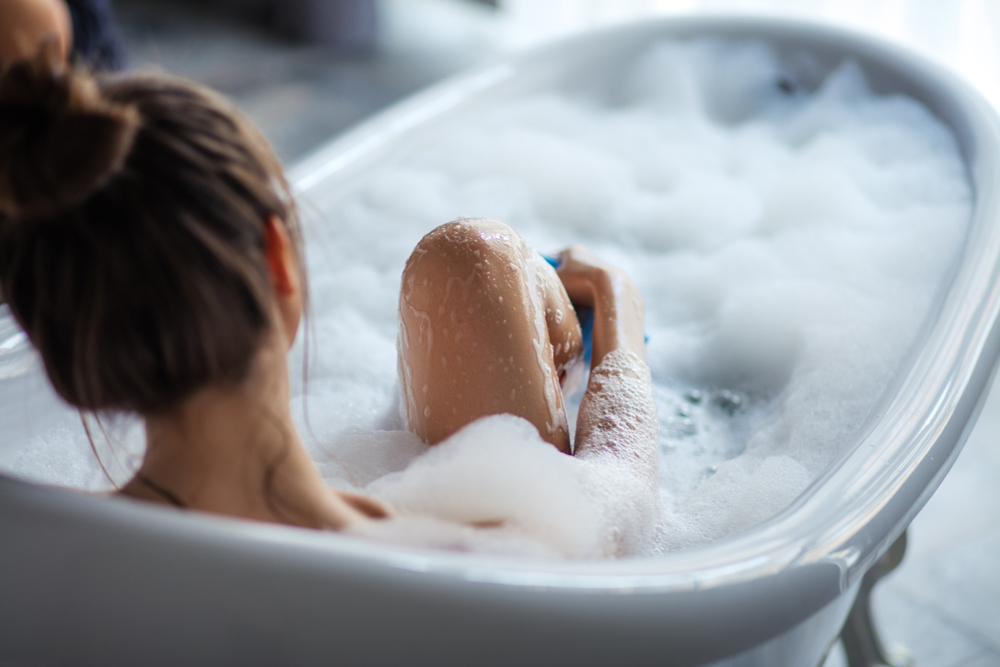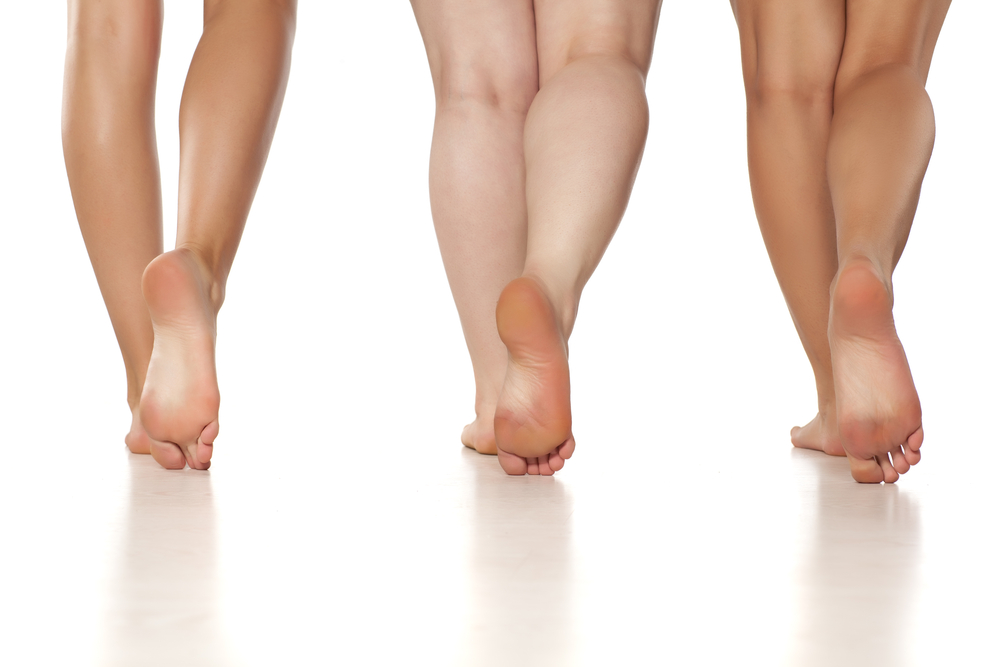At this time of year, you may well feel relieved to be covering up any thread veins on your legs with trousers and tights – but did you know there are easy ways to hide or treat them instead?
What are thread veins?
While they’re not as noticeable as the varicose type, thread veins, often dubbed spider veins, affect about half of adults, according to the British Vein Institute. Women are more prone to them than men, however, because of hormonal fluctuations. ‘Thread veins are tiny, superficial blue-ish, purple or red veins, predominantly on the legs, but which can also occur on the face and body,’ explains Dr Ross Perry, medical director of Cosmedics Skin Clinics. ‘They’re more common from the age of 30.’ So, if you’re spotting more and more of them, you’re not alone. Thread veins stem from normal veins, which grow bigger than usual.
Though the most common areas are near the ankles, the inside of the knees and outside of the thighs, they can also appear on the face, around your cheeks, chin and nose in the form of broken veins (telangiectasia).
What causes thread veins?
‘While leg thread veins are related to family history, pregnancy and co-existing varicose veins, facial ones can often be down to sun exposure or trauma,’ says Dr Perry. Severe bruising can also be a cause – if you’ve had a knock and healed, thread veins can sometimes appear in the bruise’s place. ‘They don’t tend to itch or ache, like varicose veins can, but the main concern is the appearance, which can become very noticeable,’ says Dr Perry.
So why take action at this time of year? ‘Often treatments are best done when the areas are not going to be exposed to sunlight for a few weeks afterwards,’ Dr Perry advises. ‘These veins provide no real function so it’s perfectly safe to remove them.’ Thread veins can be treated at any time throughout the year but if you’re having laser treatment, high sun protection is essential and sclerotherapy requires the use of compression stockings that would be uncomfortable during warmer weather. If you suffer with thread veins, it’s also important to get tested for varicose veins because thread vein treatments won’t be as effective unless varicose veins in the same leg have been removed first.
Best products for hiding thread veins
Don’t want to go down the clinical route? Mask those lines in seconds with these quick-fix products
- Banish redness – SwissForce Couperose and Thread Veins Balm (£24.90, allcures.com) contains concentrates of red vine leaves, gingko, algae extracts, calendula and provitamin B5 to strengthen the skin and blood vessels. The mineral-based lightening pigment neutralises redness.
- Seamless cover – Lycogel Breathable Camouflage SPF30 (£47.50, effortlessskin.com) is a lightweight foundation in 12 shades. As well as hiding imperfections, it hydrates and protects from UV rays.
- Body veil – Cover thread veins on your legs using Alleven Colour Shield (£38, cultbeauty.co.uk) body make-up that doesn’t budge. Available in three skin tones – Ivory, Sand and Amber – it gives an airbrushed effect.
Clinical and laser treatments for thread veins
Thread veins can be removed with clinical treatments, such as laser or special injections, but it’s dependent on their size, severity and location. Your medical practitioner will be able to advise on the best course of treatment for you.
Sclerotherapy
A solution is injected with a very small needle, superficially in to the veins, causing the lining of the vein to swell and become sticky. Compression is then applied and, over a period of time, the vein will heal, close and fade away. ‘Sclerotherapy is the gold standard treatment for leg veins but can’t be used on the face. It generally requires up to four treatments at three-month intervals, however milder cases may require fewer sessions,’ says Dr Nathan Holt, laser aesthetic and dermatology expert at sk:n (sknclinics.co.uk).
Microsclerotherapy
The same treatment as sclerotherapy but it involves the use of tiny needles to treat very thin and small veins. Some practitioners may offer this for the face but others favour laser for this delicate area as the lasers are smaller.
Laser treatment for thread veins
When laser energy is absorbed by blood inside the veins, it heats up the vessel wall, which collapses and dissolves. ‘This is the best treatment for facial thread veins,’ Dr Holt advises. ‘They usually require 1-2 sessions at 4-6 weekly intervals. Results are usually excellent with up to 90 per cent clearance.’
Can my thread veins be removed?
‘Thread veins in the lower part of the leg are more difficult to treat than those higher up. It is best to commence treatment sooner rather than later as larger veins can be more difficult to treat,’ says Dr Holt.
How much does thread vein treatment cost?
It’s fairly easy to compare prices for injections, but laser systems vary widely in terms of the technology and training of the practitioner. Ensure you choose a suitably qualified person who has the right equipment for treating veins in particular, as opposed to laser hair removal or skin tightening.
‘Costs for treatments vary – per patient as well as between clinics. At our clinics, we charge from £195 for facial laser thread vein removal, and from £300 for leg treatments – whether laser or injections are used,’ says Dr Perry. ‘While it’s fairly easy to compare prices for injections, laser systems vary widely in terms of the technology and training of the practitioner. Ensure you choose a suitably qualified person who has the right equipment for treating veins in particular as opposed to laser hair removal or skin tightening.’










